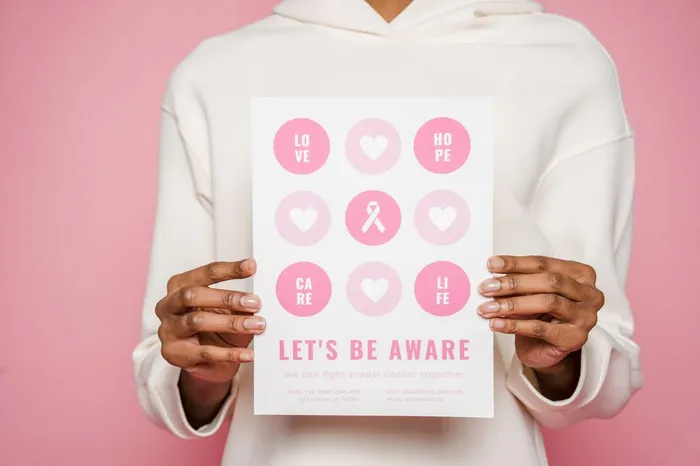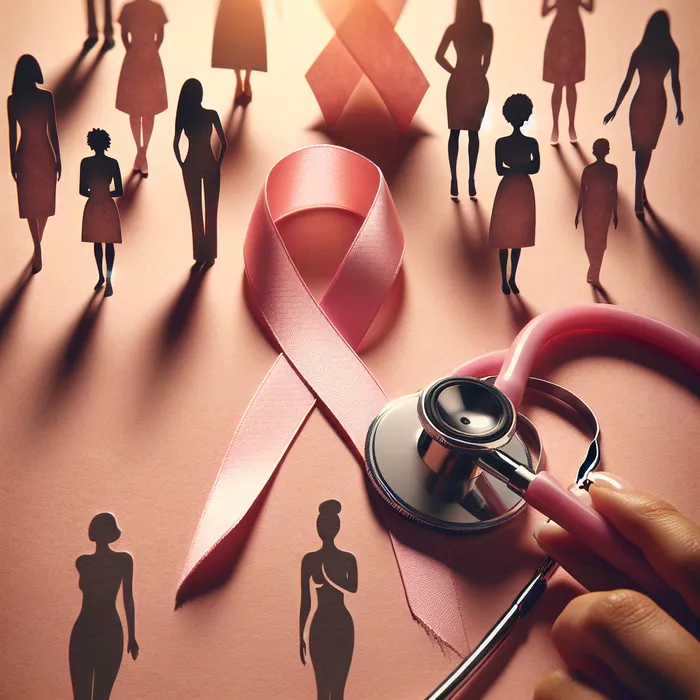Essential breast cancer resources: a guide on diagnosis, treatment and support

CANSA runs national and regional support groups for patients, survivors, caregivers, and families. These groups offer emotional support, practical advice, and a sense of community and belonging.
Image: Klaus Nielsen/Pexels
Every October, pink ribbons remind us that breast cancer is not just another headline; it's a reality that touches countless South African families.
Breast Cancer Awareness Month isn’t just about wearing pink; it’s about spreading knowledge, breaking stigma, and saving lives.
And in a country where 1 in 27 women will be diagnosed in their lifetime, according to the National Cancer Registry, the message is simple: early detection matters.
“Breast cancer is far more treatable when it’s found early,” says Dr Salomine Theron, radiologist and head of the Tygervalley Mammography Centre.
“Please don’t wait until you notice a lump or pain, book your screening and talk to your doctor. It’s one of the simplest, most powerful steps you can take to protect your health.” The reality of breast cancer in South Africa. Globally, breast cancer is the most common cancer in women.
Locally, it accounts for 23% of all cancers diagnosed in South African women, according to CANSA. Alarmingly, younger women here are often diagnosed with more aggressive forms of the disease, with an average diagnosis age of just 34 among those under 40.
These numbers can be scary, but there is hope. Death rates are slowly going down around the world because of better treatments, earlier screenings, and more awareness.
Still, many women in rural or low-income areas struggle to get regular screenings because of travel, cost or limited facilities.
Diagnosing breast cancer
Breast cancer often shows no symptoms at first, which is why screening is crucial. Still, there are warning signs you should never ignore:
- A lump or swelling in the breast or underarm
- Changes in breast size or shape
- Skin dimpling, redness, or unusual thickening
- Nipple discharge (not breast milk) or pain
- An inverted or retracted nipple
If you notice any of these symptoms, make an appointment with your healthcare provider as soon as you can. Taking care of your health can make a big difference.

This October, and every month, prioritise breast health for yourself and your loved ones. Book your screening, encourage those around you to do the same, and spread the word early detection saves lives.
Image: cottonbro studio /Pexels
Screening options in South Africa
Unlike some countries, South Africa doesn’t yet have a national mammogram screening programme. That means women must rely on self-checks, clinical breast exams, and, where possible, mammography.
Here’s what’s available:
- Breast Self-Examination (BSE): Check your breasts monthly for any changes. CANSA recommends this for all women.
- Clinical Breast Examination (CBE): A doctor or nurse manually checks for lumps. Available at primary health centres.
- Mammography: The gold standard for early detection. Recommended annually from age 40. Private providers and NGOs, such as PinkDrive and Mediclinic, bring screenings closer to communities, often at a lower or no cost.
According to CANSA and the Breast Imaging Society of South Africa, women aged 40–70 should aim for an annual mammogram, especially if they have risk factors like a family history of breast cancer.
Treatment options
Treatment depends on the type, stage, and location of the cancer. It usually involves one or a combination of the following:
- Surgery (removing the lump or breast tissue).
- Chemotherapy (drugs that destroy cancer cells).
- Radiation therapy.
- Hormone therapy.
- Targeted drug therapy or immunotherapy.
The Department of Health’s Breast Cancer Prevention and Control Policy is working to improve access to specialised breast units across the country, so that more women can receive timely, quality care.

Navigating breast cancer in South Africa: Symptoms, screenings, and support options
Image: Ron
Men get breast cancer, too. Though rare, it accounts for 1.8% of breast cancers in South Africa, higher than the global average.
Symptoms include a painless lump, inverted nipple, or unusual discharge. Risk factors range from genetic mutations (like BRCA1/2) to obesity and heavy alcohol use. Awareness is key; early detection improves survival.
You don’t have to walk this journey alone
A diagnosis can feel overwhelming, but community and support make a difference.
CANSA runs national and regional support groups for patients, survivors, caregivers, and families. These groups offer emotional support, practical advice, and a sense of community and belonging. Support groups include:
- Newly Diagnosed Support Group
- CANSA Women with Cancer
- Men’s Support Group
- Bereavement and Caregiver Support
You can also call CANSA’s toll-free helpline (0800 22 66 22) or connect with the Cancer Alliance for resources and patient rights information. Despite increased awareness, many people have lingering questions and fears about screening.
- “I’m scared of what the results might be”: That’s normal. But finding cancer early gives you more treatment options. Avoiding the test won’t change the result.
- “I had a mammogram last year. Do I need another one?” Yes. Cancer can develop between screenings, which is why yearly checks are recommended from age 40.
- “What if I can’t afford a mammogram?” NGOs like PinkDrive provide free or subsidised screenings in under-resourced areas. Ask your clinic about referrals.
This October, and every month, prioritise breast health for yourself and your loved ones. Book your screening, encourage those around you to do the same, and spread the word - early detection saves lives.
Key resources in South Africa:
- CANSA (0800 22 66 22 | www.cansa.org.za)
- PinkDrive (www.pinkdrive.org)
- Cancer Alliance (www.canceralliance.co.za)